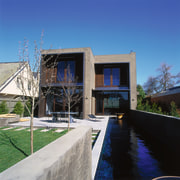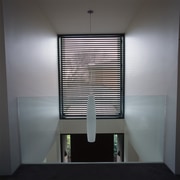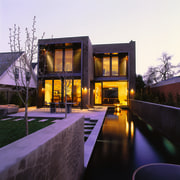Right from the start
Design your home with energy efficiency in mind, and you'll not only save money, you'll also be helping to reduce the effects of climate change
Planning a new home provides an ideal opportunity to consider energy efficiency. With the right design and materials you could save hundreds of dollars a year in energy costs and make your home more comfortable and healthier.
It's a concept endorsed by the New Zealand Climate Change Office. Director Judy Lawrence says people building a new home are in a good position to make choices that will bring about such change.
"For the best results, it pays to start right at the design stage," she says. "This is the time to choose not only the layout, but also the materials, heating, lighting and even appliances, bearing in mind the energy efficiency of different products."
Your architect should be familiar with energy efficiency planning, but Robert Tromop of the Energy Efficiency and Conservation Authority (EECA) suggests a few points to consider.
The first, and most important, is to ensure your house is oriented to the sun, with living areas on the north side.
"We suggest you aim to get six hours of sunshine or bright daylight, in the main windows each day," says Tromop. "Extending your house along an east-west axis will maximise solar gain."
Tromop says your largest windows should be north-facing to make the best use of the sun's heat in winter. Shading or overhangs will help keep the sun at bay in summer, reducing overheating. East-facing windows are recommended, as they bring in heat from the morning sun. Conversely, Tromop suggests avoiding large west-facing windows, as these can cause your home to overheat. Similarly, avoid south-facing windows, as they will lose more heat than gain.
Double-glazing something that is taken for granted in colder countries is worth considering, especially if you live in colder parts of New Zealand or have views you don't want to block with curtains.
"Double-glazing, especially in living areas, saves energy, eliminates condensation and provides noise insulation," says Tromop. "We suggest homeowners negotiate a contract with a glazing company prior to building. This will ensure you get the best deal available."
Insulation is another area to consider. Although New Zealand's Building Code stipulates wall, floor and ceiling insulation in new homes, EECA recommends insulating above the code minimums.
"We recommend the better' and best' levels outlined in the SNZ 4244 guide from Standards NZ," says Tromop.
Building with concrete helps to keep your home at an even temperature all year round warm in winter and cool in summer. Any mass of concrete, stone, slate or tile that is exposed to direct sunlight will absorb heat and release it slowly, keeping your home's interior warm long after the sun has gone down. Dark-coloured thermal mass is more effective as it absorbs more heat from the sun, says Tromop.
"For most New Zealand homes, the mass in a floor slab is sufficient for thermal storage, but the concrete must be exposed. External concrete walls must be well insulated to retain the heat stored."
The planning stage is also the time to consider your space and water heating options. Water heating accounts for 30-40% of your home's heating costs.
Two options to consider include solar heating and continuous flow gas water heating. Vector, the country's largest multi-utility network owner, says a gas continuous flow hot water system heats only the water that is needed. This means you don't have to store hot water unnecessarily.
Ensure your water heater is positioned as close as possible to the point of use avoiding long pipe runs.
Gas also provides efficient and cost-effective space heating options. You can choose a ducted central heating system, underfloor heating, portable or flued gas heaters, or flame-effect fires with sealed combustion chambers for greater efficiency. Space heating appliances come with electronic timers and thermostats so you use only as much gas as needed to keep your home warm and cosy.
Heat pumps are very a efficient space heating option. A heat pump uses about 1kW of electricity to generate 3kW of heat.
Considerable energy savings can be made with lighting. Energy-efficient light fittings and compact fluorescent lamps (CFLs) can reduce your power bill without compromising your lighting. CFLs use around 20% of the energy needed by an incandescent bulb to produce the same amount of light and lasts about 8 times longer. Timer switches that turn off lighting when not needed are also useful.
Appliance choice can also make a big difference to your energy costs. Check out the energy star rating there's about a 10% improvement in efficiency with each star. EECA says you can save up to $100 per year in running costs between the best and worst refrigerators.
Where possible, consider gas ovens and cooktops you will also get the benefit of fast, efficient heat.
Building a new house is also the time to consider your outdoor living requirements. Built-in gas barbecues and patio heaters are ways to extend your enjoyment of an outdoor living area.
Story by: Trendsideas
Home kitchen bathroom commercial design
Connected to the ocean
Masculine meets mixed use
Contrast and connection








